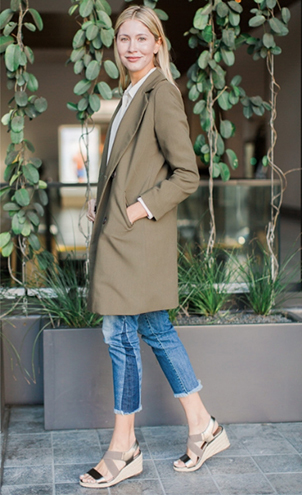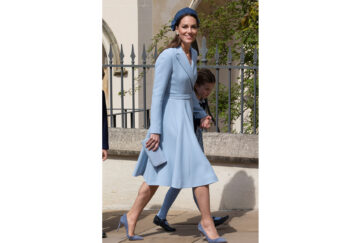Choose Comfy Shoes

Don’t miss this week’s Looking Good feature, with 2 pages of shoes including styles by comfort footwear specialists Sole Bliss, Hotter and Vionic – with a chance for two lucky readers to win a pair of luxurious Vionic shoes.
Here are a few top tips on how to keep your tootsies in tip top shape whilst working out by shoe pad specialists Sticky Heelz:
Do the “Wet Test”
How can you choose the right footwear if you’re unaware of the dynamics of your feet? One way to determine your foot’s shape is a “wet test”. Simply wet your foot, step on a piece of brown paper and trace your footprint.
If your footprint shows the entire sole of your foot with little to no curve on the inside — or if your shoes show the most wear on the inside edge — it means you’ve got low arches or flat feet and tend toward over pronation — meaning your feet roll inward. Over pronation can create extra wear on the outside heel and inside forefoot. You’ll want a shoe with a motion-control feature and maximum support.
If the footprint shows only a portion of your forefoot and heel with a narrow connection between the two — or if your shoes wear out mostly on the outside edge — you have high arches and tend to under pronate (also called supinate), meaning your feet roll outward. Under pronation causes wear on the outer edge of the heel and the little toe. Look for a cushioned shoe with a soft midsole.
You have a neutral arch if your footprint has a distinct curve along the inside and your shoes wear out uniformly. Look for a “stability” shoe, which has the right mix of cushioning and support.
The Right Fit
When it comes to fitting trainers, choosing the right shoe size is deceptively complex. To start, manufacturers do not follow standards for length and width. Sizes vary not only between brands but also among different styles of the same brand. Unfortunately, many manufacturers make trainers in only one width and most stores carry limited inventory. As a result, patients with wider feet frequently wear shoes that are too long in order to get the width they need.
When you’re standing, a properly fit shoe should have approximately a 1/2-inch to 5/8-inch space from the end of the longest toe to the end of the shoe. The correct width accommodates the foot without bulging on the lateral side and without excess material on top. Customers used to wearing shoes that fit too short often find that the right size feels too large.
Sticky Heelz pads (£6.99, Boots.com) improve the fit and comfort of new trainers that rub at the heel or slip off your feet due to irregular sized feet or loose fitting trainers. They also improve shoe fit and comfort for people with different sized, small, narrow and half size feet and feet prone to swelling.
Don’t Overlook Socks!
While shoes are important, experts say the no. 2 cause of workout- related foot problems is wearing the wrong socks. Because socks provide the cushion between your skin and your shoe, they can either prevent or cause friction that eventually leads to irritation, and sometimes injury. Seek out a sock with some cushioning on the sole, in one of the new microfiber fabrics designed to wick away moisture, the experts advise.
Socks should also be white because the white allows you to immediately see if there is a problem. Any stain on the sock, either blood or a yellow-tinged fluid, or even a clear liquid, you know something is wrong, even if you can’t feel it
Strengthening Exercises For Feet
For feet to stay healthy, they have to be strong. Performing exercises barefoot will ensure that every muscle and ligament in your lower body is in working order. Complement cardio or high impact routines with of yoga or body-weight movements. The key is to include exercises that improve mobility and balance to prevent the development of weak links in your body:
Stand barefoot holding the back of a chair for balance, feet facing forward. Keeping your right leg straight, bend the left leg at the knee, so your foot is at a 90-degree angle behind you. Hold this position for 30 seconds and repeat on each leg 2 to 4 times. As your strength and balance improve, let go of the chair. As you continue to progress, you can make this exercise more demanding by raising your arms overhead, closing your eyes or adding a pillow or pad underfoot.
Ease into your routine!
While being excited about your new workout program is a good thing, doing too much too soon is the quickest way to put your feet out of commission; this is especially true for people who haven’t worked out for a very long time. Ease into your routine gently and add on extra reps or weights week by week. Your feet are like the barometer for your whole body. If they begin to act up, it’s a sign you’re putting too much stress on your heart, your lungs, your muscles, your bones, as well as your feet.
For more on looking after your feet, see Prep Your Tootsies For Summer




